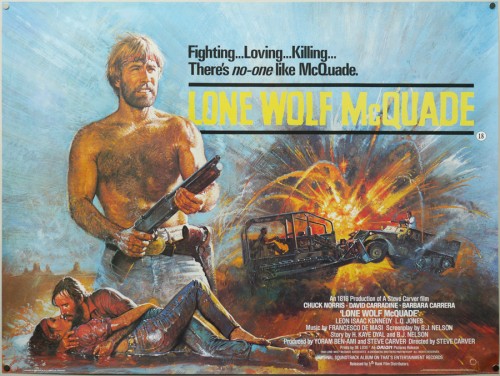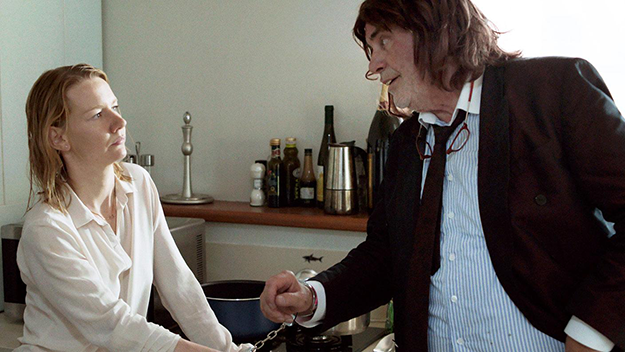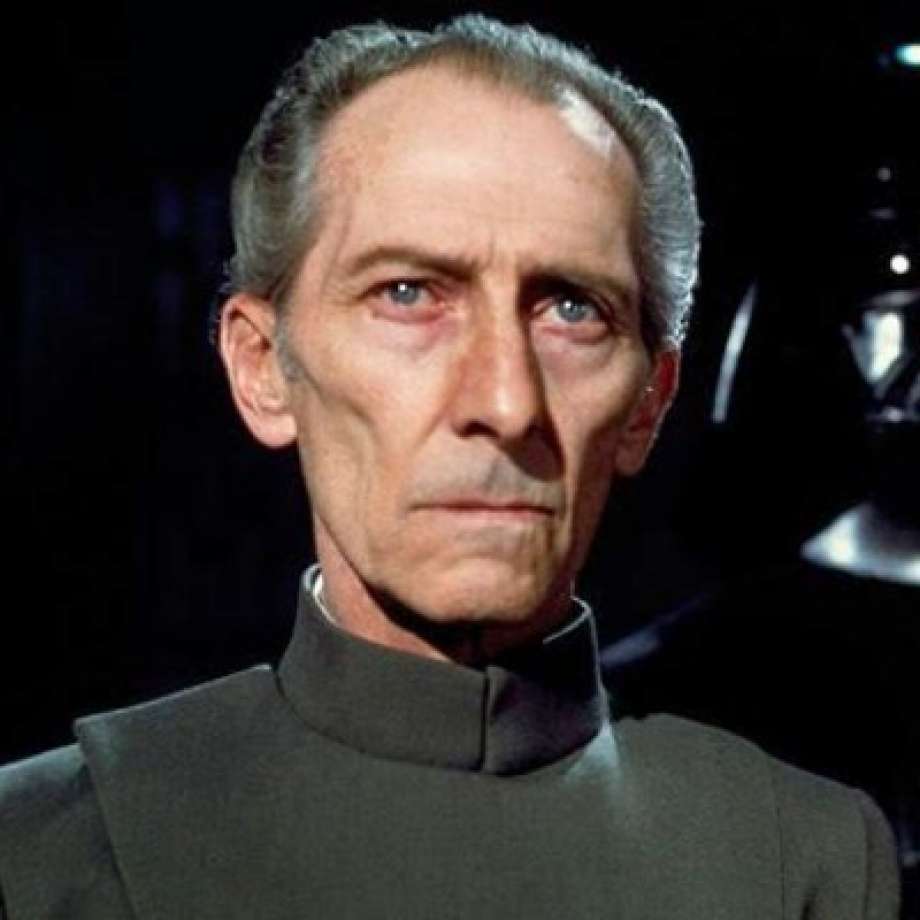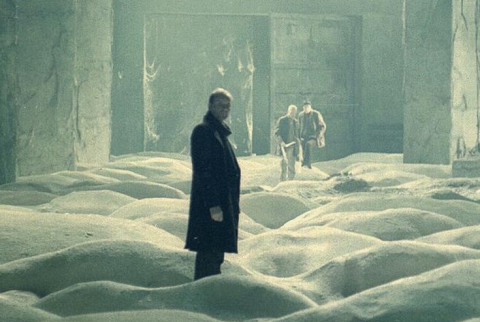Category: Film
*Toni Erdmann*, misunderstood masterpiece (full of spoilers)
Since no major English-language critic has made my major novel observation, can a flat-out wrong claim be considered a spoiler? I say the optimal time to read this post is in the middle of the movie, not before, not after. I’ll put the rest of under the fold…
First, Toni Erdmann is one of the most stimulating and multi-faceted movies I’ve seen in years, “utterly unique and wholly indefinable.” My non-spoiler plot summary is that an elite female German management consultant is called in to advise on outsourcing to Bucharest, and during the course of the movie she discovers she cannot get away from her father so easily.
Most of the core action unfolds after the woman’s father comes to visit her in Bucharest, and subjects her to an escalating series of escapades, mostly with co-workers. At least on the surface, the woman is efficient and worldly but emotionally stunted. Her father is rude and genuine and comic and self-destructive with his blundering interventions, unable to stop offending people, grabbing the attention, and repeatedly undercutting his daughter’s self-confidence. Everything has to be about him. As the movie progresses, however, the daughter learns she and her father are not so different after all.
What is this movie so good at?
Humor and comic set pieces. Staging a scene and subverting your expectations. Creating its own world, spread across a large and sprawling canvas (it’s almost three hours long). Expat life. The new German nationalism. Showing the multiple ways that women are condescended to or debased in the corporate world. Toadying. Rebelling by joining the establishment. The relationship between Germany and the economically colonized parts of Eastern Europe. The new principles of sex (and food). The emotionally unrewarding nature of contemporary cosmopolitan life, but also the limits of rootedness. And of course father-daughter dynamics and their persistence.
One rewarding way to watch the film is simply to track how many ways the German protagonist — in terms of her groveling, her rhetoric, and finally her complete nudity — is reduced to the status of her obsequious Romanian assistant. That’s factor price equalization with a vengeance.
OK, so what is the catch and major spoiler? I say this film uses a Fight Club-like trick, though unlike Hollywood it doesn’t feel the need to tell its viewers outright.
Most of the father’s Bucharest visit to his daughter never actually takes place (some of it probably does, though we cannot quite be sure). The father leaves Bucharest, and when the daughter supposedly runs into him again at a city bar, in his disguise, while she is talking about him to her friends, he isn’t really there. The coincidence of the encounter is too extreme and no attempt is made to explain it. And, after the conversation, when he leaves and climbs into the largest limousine you ever have seen (he’s a music teacher back home, not a CEO), that too is a sign this isn’t really happening. The unreality of his continuing visit also explains the succeeding odd medley of coincidences, and that she simply doesn’t tell him to cut it out and stop ruining her career. He is haunting her imagination, and no simple physical remedy will do.
If you do not understand this point, much of the movie will seem obnoxious and overstated, or even nonsensical. In fact a few reviewers have made this complaint (some reviews here); if your critic is employing the word “preposterous,” beware!
In my reading of the film, the handcuffs sequence is the key scene. The father comes along and handcuffs himself to the daughter, without having a key to open them up. That’s how she feels about her station in life. Eventually they find someone to pick the lock, but if you’re wondering why she tolerates this behavior, and immediately afterwards takes him to a bunch of work meetings and interviews…well, think Fight Club. She truly does carry him with her, no matter where she goes.
Also, for further clues, listen to the lyrics of the Whitney Houston song she sings at the Romanian party.
The now-famous nude party scene reflects how the daughter feels exposed and naked out in her job, much as she feels she never can escape her father. The appearance of the “furry creature” at the party then shows that her father — as a figment — will keep on coming back, in whatever extreme manifestations might be required.
Recall in the opening scene how the father is hiring/installing an imaginary daughter? She is mirroring this same behavior — also in a destructive way — by installing an imaginary father. The movie’s title, Toni Erdmann, of course refers to the father’s (supposed) alter ego, not to the father himself; that should be another clue.
People, no one gets this movie. It does have very positive reviews, but the American and British critics are missing the boat.
Faux Quebec village markets in everything
Canadiana Village, about an hour north of Montreal near Rawdon, Que., has been on the market since the fall. The nearly 60 hectares of land and 45 buildings are going for $2.8 million.
The village is designed to resemble a pioneer settlement from the 19th century, and includes a church, a general store, a mill, a cemetery, a saloon and 22 houses.
However, most of the buildings are just for show.
…”There’s only one livable home.”
Kaija said most of the buildings were shipped to the village over the years.
In its heyday, the village welcomed close to 30,000 tourists per year and was a popular destination for school field trips.
It was also featured in more than 110 film and TV productions, including Radio-Canada’s Pays d’en haut and I’m Not There, a Bob Dylan biographical drama.
Here is the full story, with photos, and for the pointer I thank Michelle Dawson.
Chuck Norris Versus Communism
Chuck Norris Versus Communism is a great documentary about art, the power of heroes, and the end of communism in Romania. After the communist regime was established in 1948, travel was restricted, the media were censored and the secret police watched everyone. Romania was cut off from the rest of the world. In the mid-1980s, however, smuggled VHS tapes of American movies began to circulate. Underground groups would gather together to watch samizdat movies like Rocky and Lone Wolf McQuade.
 For many of the young boys (now men) featured in the documentary the West’s action heroes became role models of endurance, independence and fortitude. I too remember running home filled with enthusiasm after seeing Rocky but in Romania the message was all the more powerful because there was so little else to compete with Hollywood’s images and watching was itself a kind of heroic snubbing of the regime.
For many of the young boys (now men) featured in the documentary the West’s action heroes became role models of endurance, independence and fortitude. I too remember running home filled with enthusiasm after seeing Rocky but in Romania the message was all the more powerful because there was so little else to compete with Hollywood’s images and watching was itself a kind of heroic snubbing of the regime.
The action was exciting but perhaps even more revealing were the ordinary scenes of supermarkets stocked with food, at a time when Romania was racked with severe rationing. City lights, beautiful cars, and the ordinary freedoms of worship and belief casually portrayed, all impressed on the Romanian viewers the starkness of their own situation.
Almost all of the movies were dubbed (technically voice over translated) into Romanian by one woman who took on all the roles. Few people knew her name but her voice became entwined with that of the heroes she translated and she became a national symbol of freedom. Irina Nistor is revealed as a real hero who despite great personal risk continued to translate hundreds of movies because that is when she felt most free.
There’s also a mystery that the documentary discusses but does not fully answer. How did the mastermind of the smuggling operation, Teodor Zamfir, get away with it? At least some of the authorities had some idea of what he was doing but perhaps due to bribery, perhaps because there were no longer any true believers, perhaps because the authorities thought the movies would provide an escape valve from the harshness of Romanian life, they allowed the operation to continue. Zamfir also appears to have had immense personal charisma, so much so that he somehow turned an undercover operative to his side. It’s a remarkable story.
Chuck Norris Versus Communism is available on Netflix.
Hat tip: Dan Klein and also Emily Skarbek’s excellent post.
Why is there dynamic surge pricing *for rides*?
“Surge Pricing Solves the Wild Goose Chase” is the title of the new paper by Juan Camillo Castillo and E. Glen Weyl, here is the abstract:
Why is dynamic pricing more prevalent in ride-hailing apps than movies and restaurants? Arnott (1996) observed that an over-burdened taxi dispatch system may be forced to send cars on a wild goose chase to pick up distant customers when few taxis are free. These chases occupy taxis and reduce earnings, effectively removing cars from the road and exacerbating the problem. While Arnott dismissed this outcome as a Pareto-dominated equilibrium, we show that when prices are too low relative to demand it is the unique equilibrium of a system that uses a first-dispatch protocol (as many ride-hailing services have committed to). This effect dominates more traditional price theoretic considerations and implies that welfare and profits fall dramatically as price falls below a certain threshold and then decline only gradually move in price above this point. A platform forced to charge uniform prices over time will therefore have to set very high prices to avoid catastrophic chases. Dynamic “surge pricing” can avoid these high prices while maintaining system functioning when demand is high. We show that pooling can complicate and exacerbate these problems.
Perhaps it is an analogy to suggest movie theaters might use more surge pricing if a low valuation buyer took up the seat for several showings of the movie rather than just one.
Dan Klein reviews *Rogue One* (with spoilers)
He emails to me:
I thought it great. It brings something strikingly new to the Star Wars universe – new in a number of ways, good ways:
1. It’s a self-contained heroic tragedy. You know the new characters are doomed. A useful comparison is the Obi Wan-Anakin battle in III: The Rogue One feeling of tragedy is less powerful but more comprehensive.
2. The plot and the character development are based on dissension, conflict on the rebellion side. Even the “extremist” plays a vital role in the success.
3. The dedication of rebels to the rebellion is depicted as the best of bad options for making one’s life meaningful, and as something that one gets locked-in to.
4. Rebel activity appears brutal, as though the conventional IV-VI image of the rebellion is but the fanciful illusion of those caught in the day-to-day misery of prosecuting the rebellion. But still that illusion is sustained – in Rogue One we have the drama behind a piece of that larger story, a tragic, engrossing aside.
5. On the rebel side, the Force persuasion appears, not the sage wisdom of Alec Guinness, but more the religion of deplorables, a resort of desperation. Some of the rebels come across as fanatics.
Darth is sparse but still the heavy, more chilling than ever.
BTW, the “Pappa, pappa” scene was, I think, a tribute to the 1995 Cuarón masterpiece A Little Princess.
My favorite things Nigeria
Yup, I’m here. I made this list before setting off:
1. Popular music: Few from any country come close to Fela Kuti, the main question is how many you should buy, not which ones. Most of them! On the CD medium, that old series of “two albums on one CD” was the best way to consume Fela. On streaming, you can probably just let it rip. And rip. And rip. Other favorites are King Sunny Ade and I.K. Dairo, I don’t love Fema Kuti. You also might try Nigerian psychedelic funk rock from the late 60s and early 70s, for instance found here. Most of all, there are thousands of wonderful local performers in Nigeria, you can watch a few of them on the Netflix documentary on the Nigerian music scene, titled Konkombe, recommended and only an hour long.
There is now a good deal of hit Nigerian and Nigerian-American music, such as Wizkid. It is enjoyable but does not compare to Fela in terms of staying power.
2. Basketball player: The Dream is one of my three or four favorite players of all time. My favorite Hakeem was watching him pick apart David Robinson play after play after play…see the final clip on the immediately preceding link.
3. Novel: Chinua Achebe, Things Fall Apart. Honorable mentions go to Wole Soyinka, Ben Okri, and my colleague Helon Habila. There are also the Nigerian-American writers, such as Chimamanda Ngozi Adichie. Teju Cole is worth reading, including his non-fiction.
4. Movie: Well, I’ve seen parts of some of them, and you should at least sample some Nollywood if you haven’t already. It’s kinetic. The documentary “Nollywood Babylon” (Netflix) gives you some background. As for “Movie, set in,” I draw a blank. “Album, set in and recorded in” would be Band on the Run, Paul McCartney and Wings.
5. Actor: Chiwetal Ejiofor, he starred in “Twelve Years a Slave,” and is from a Nigerian family in Britain.
6. Presidential name: Goodluck Jonathan.
7. Artist: Prince Twins Seven Seven, or more formally Prince Taiwo Olaniyi Wyewale-Toyeje Oyekale Osuntoki. He received his nickname because he was the only surviving child from seven distinct sets of twins.
8. Food dish: At least for now I have to say jollof rice, a precursor dish to jambalaya, further reports to come however!
The bottom line: Lots of talent here, plenty more on the way.
Law and Literature, syllabus for Spring 2017
The New English Bible, Oxford Study Edition
Guantanamo Diary, by Mohamedou Ould Slahi
Petinal Gappah, The Book of Memory
Glaspell’s Trifles, available on-line.
Year’s Best SF 9, edited by David G. Hartwell and Kathryn Cramer, used or Kindle edition is recommended
The Metamorphosis, In the Penal Colony, and Other Stories, by Franz Kafka, edited and translated by Joachim Neugroschel.
In the Belly of the Beast, by Jack Henry Abbott.
Primo Levi, If This is a Man
Sherlock Holmes, The Complete Novels and Stories, Sir Arthur Conan Doyle, volume 1, also on-line.
I, Robot, by Isaac Asimov.
Death and the Maiden, Ariel Dorfman.
Juan Gabriel Vasquez, Reputations
Graeme Macrae Burnet, His Bloody Project
The Pledge, Friedrich Durrenmatt.
Ian McEwan, The Children Act
Movies: Difret, Court, The Chinese Mayor, A Separation
Peter Cushing, *Rogue One*, and “fake news” will soon get worse
I was watching the excellent Rogue One when suddenly I thought “Wow, they sure found an actor who looks just like Peter Cushing.” As the scene, progressed my thoughts changed to “Tyler, are you sure that Peter Cushing passed away?” As I watching the credits, I saw a thanks to the “Estate of Peter Cushing, OBE,” and so I went back to wondering about the actor, but then why did they thank the estate?
…the face of Peter Cushing, the imposing British actor who died in 1994, lends an especially memorable presence to “Rogue One” by helping to “reprise” his “Star Wars” character, Grand Moff Tarkin, the Imperial governor who practically rules by force of glare, intonation and cheekbone.
…Under director Gareth Edwards, “Rogue One” represents another marker in the decades-long quest for the best CGI-fashioned human replicas. The filmmakers auditioned actors to “play” Cushing’s Tarkin, settling on BBC soap actor Guy Henry. This Tarkin is thus free of the dreaded “dead eye” effect. Lo, though the effects wizards walk through the “uncanny valley,” Tarkin registers as quite alive — even if his facial proportions sometimes read as ever so slightly off from the Original Trilogy. We are nearing the reality of a fully fleshed-out, CGI-enhanced performance long after an actor has passed.
If “Rogue One” wins an Oscar for effects, Cushing should be in no small part why.
When will the slope start where amateur video becomes significantly less trustworthy as well? Or even just “But Mom, I saw him do it on TV!” While we’re at it, how about a symphony orchestra conducted by “Beethoven”?
What if they made a great Star Wars movie and nobody noticed or cared?
That is how I felt watching Rogue One, which the audience seemed largely indifferent to. But contrary to what many of the reviews suggest, the plot is not especially muddled, the drama is legitimate, and the ending more than satisfactory. The visuals are spectacular, with the digital work supplemented by on-site filming in the Hashemite Kingdom of Jordan, Iceland, and the Maldives. If you have a good memory for visual images, you will notice many parallels, including homages to Kurosawa and a number of classic war movies. From the Star Wars franchise itself, episodes 1-3 are treated as iconic as are 4-6. It’s much more of a Star Wars movie than the marketing has been letting on, and indeed this is the real Star Wars movie that many of you have been waiting for. (Maybe the worse the “sequence” movies get, the better the “knock-offs” become, a’la Frank Ramsey, a nice trick they are playing here.) It’s not perfect, but had they made this instead of Return of the Jedi, at the time I would have been “happy enough.”
Will Sylvester Stallone chair the National Endowment for the Arts?
Donald Trump has drawn ‘first blood’ in the search for his incoming administration’s senior arts role – by tapping up Rambo legend Sylvester Stallone.
Sources have told DailyMail.com the president-elect sees Hollywood icon Stallone as the perfect choice to make art great again.
The likely position would be Chairman of the National Endowment for the Arts, a federal agency that doles out funds to aspiring artists and creative projects.
Here are my earlier suggestions for how Trump could improve government support for the arts. Here is an article on Stallone as painter, with photos. Furthermore, Raphael once painted Stallone. His favorite perfume is Bijan for Men by Bijan. I say this is probably a good pick, as it would bring glamor and attention to a much-neglected agency.
Addendum: Judge Dredd is an excellent movie!
Best movies of 2016
45 Years, British drama about a creaky marriage.
The Boy & the World. A Brazilian animated movie, it actually fits the cliche “unlike any movie you’ve seen before.” Preview here, other links here, good for niños but not only. Excellent soundtrack by Nana Vasconcelos.
The Second Mother. A Brazilian comedy of manners about social and economic inequality, as reflected in the relations between a maid, her visiting daughter, and the maid’s employer family. Now, to my and maybe your ears that sounds like poison, because “X is about inequality” correlates strongly with “X is not very good,” I am sorry to say. This movie is the exception, subtle throughout, and you can watch and enjoy it from any political point of view. It helps to know a bit about Brazil, and it takes about twenty minutes for the core plot to get off the ground. Links here.
Cemetery of Splendor, Thai movie by Apichatpong Weerasethakul, here is a good review.
City of Gold, a documentary with Jonathan Gold doing the ethnic food thing in Los Angeles.
Hunt for the Wilderpeople is an original movie, mostly about race, full of cinematic allusions (LOTR, First Blood, Smash Palace, classic Westerns, Butch Cassidy, Thelma and Louise, so many more) and Kiwi finery as well. None of the reviews I read seem to get it and I don’t want to send you to any of them.
The Innocents, how did those Polish nuns get pregnant?
Maggie’s Plan, a fun comedy, not at the top of this list but intelligent comedies are a dwindling species.
Ixcanul, a Mayan movie from Guatemala, might this story of an unwanted pregnancy be this year’s best movie? Here is one useful review.
Sausage Party, beyond politically incorrect, I kept on thinking I would get sick of the stupid animation and yet I never did. I remain surprised they let this one play in mainstream theaters.
Sully. He should have turned the plane around immediately under any plausible calculus, and he didn’t, so you have to give this movie the Straussian reading.
Weiner is a splendid movie with many subtle points, including in the philosophical direction. In another life, Huma Abedin could have been a movie star. She has exactly the right mix of distance and involvement, and she dominates every scene she is in, even when just sitting quietly in the background. Um…I guess she is a movie star. Starlet. Whatever.
Difret, an Ethiopian legal drama.
Andrei Tarkovsky, Ivan’s Childhood (reissue). This is one of Tarkovsky’s worst movies, and yet one of the best movies in virtually any year.
The Handmaiden, by Park Chan-wook. Imperfectly eroticized violence, but beautiful nonetheless.
Elle, by Paul Verhoeven.
Nocturnal Animals, by Tom Ford.
The bottom line
My top picks are Ixcanul, American Honey, Hunt for the Wilderpeople, Cemetery of Splendor, and Sky Ladder, with Arrival being the best mainstream Hollywood movie.
*Arrival*
I’ve never seen a movie before where I wanted to yell at the screen “It’s called the Coase theorem!”, and furthermore with complete justification. There is plenty of social science in this film, including insights from Thomas Schelling and the construction and solution of some non-cooperative games, mostly by introducing a more dynamic method of equilibrium selection. There are homages to Childhood’s End, 2001, Close Encounters, Interstellar, Buddhism, Himalayan Nagas, Eastern Orthodox, the theology of the number 12, and more. It’s hard to explain without spoiling the plot, but definitely recommended and maybe the best Hollywood movie so far this year. Nice sonics too.
How to choose and assess the movies you are watching
Greg Adamo, a loyal MR reader, writes me with a query:
I have two related questions sparked by your review of American Honey.
First, do you have any tips on judging movies? I make a lot of mistakes. I dismiss a number of very good movies after seeing them the first time. If I happen to watch them a second time – or even a third – I come to see a lot of virtues that I missed originally. I thought Pulp Fiction and the Big Lebowski were quite overrated the first time I saw them. 20 years later, having seen them both several times, my view has changed greatly. These are only two examples – there are dozens more. How can I avoid this problem?
Second, what is the correct time period for appreciating a movie? We have an annual award system (the Oscars). Like me, it also makes a lot of mistakes. Misfires like Crash or Shakespeare in Love – the don’t hold up to other winners. How Green Was My Valley beat Citizen Kane. Hitchcock never won an Oscar. It’s not just me that goofs up – it’s everyone.
I can’t help but think time is a factor. Suppose the Oscars were like the Baseball hall-of-fame and had a five-year waiting period. Would that improve the selection? Is there a market-failure in the movie-critic journalism business that pushes reviews out so near to the release date?
This is an area in which overconfidence and bias abound. I wonder if I’m better off disregarding individual movie reviews in favor of aggregated data – i.e. rotten tomatoes.
Those are some very good questions, I will offer some general observations in response:
1. If the movie was shot for the big screen, you must see it on the big screen. Otherwise your response is not to be trusted.
2. Try not to discriminate by genre or topic, for instance “I don’t like war movies,” “I don’t like romantic comedies,” and so on. You’ll miss out on the very best of that genre or topic this way, and those are very likely very good indeed. (NB: In your spare time, you can debate whether there is a horror movies exception to the principle.)
3. In my view, the bad Oscar picks were evident right away. A five year wait will only elevate some other set of mediocre movies instead. Movie awards are designed to generate publicity for the industry, not to reward merit. Ignore them.
4. I use movie criticism in the following way: I read just enough to decide if I want to see the movie, and then no more. I also try to forget what I have read. But before a second viewing of a film, I try to read as much as possible about it.
5. On net, I find the best reviews are in Variety magazine, as they are written for movie professionals. And the market for reviews is largely efficient. That is, if you read six smart critics on a movie — usually just two or three in fact — you will have a good idea of the quality of the movie. But you must put aside movies that are politically correct or culturally iconic, as they tend to be overrated. Brokeback Mountain and The Graduate will make plenty of “best of” lists, and they are both interesting and extremely important for both cinematic and cultural reasons. Still, I would not say either is a great movie, though they have some wonderful scenes and themes.
6. Hardly anyone watches enough foreign movies, that means you too. Or you might not watch enough outside your favored cinematic area, such as French, Bollywood, etc. There is a switching cost due to different cinematic “languages,” but most of your additional rewards at the margin probably lie in this direction. Furthermore, the very best foreign movies are so excellent it is easy to find out which they are.
7. I still think Pulp Fiction and The Big Lebowski, while good, are overrated. Don’t always assume your second reaction is the correct one. In addition, a lot of movies are made to be seen only once, so don’t hold that against them. For instance, I am not sure I need to see the opening sequence of Private Ryan again, but I am very glad I saw it once. It made seeing the whole movie worthwhile, but since most of the rest is ordinary, albeit serviceable, seeing it again would be excruciating.
8. It is a mistake to smugly assume that television has surpassed movies. The best movies (mostly foreign) are better than the best TV, even today.
What tips can you all offer?
*Walk Through Walls*
That’s the new and very direct and frank memoir by Marina Abramović. It is a narrative of how a very smart and insightful person can choose (almost) never to think like an economist, and how she might evolve from a naive Serbian virgin to one of the world’s most worldly, serene, and profound performers. Here is one part:
My parents’ marriage was like a war — I never saw them hug or kiss or express any affection toward each other. Maybe it was just an old habit from partisan days, but they both slept with loaded pistols on their bedside tables! I remember once, during a rare period when they were speaking to each other, my father came home for lunch and my mother said, “Do you want soup?” And when he said yes, she came up behind him and dumped the hot soup on his head. He screamed, pushed the table away, broke every dish in the room, and walked out.
As for her famed lover, the unreliable Ulay, the cause of her broken heart:
A small crowd was there to watch our meeting [on China’s Great Wall]. I wept as he embraced me. It was the embrace of a comrade, not a lover: the warmth had drained out of him. I would soon learn that he had impregnated his translator: Ding Xiao Song. They would marry in Beijing in December.
This book passed the core test that I wanted it to be much longer than it was. Here is a good Carl Swanson profile of the artist and the book, maybe the best piece I have read this week.
Vertical Integration, Market Foreclosure, and Consumer Welfare in the Cable Television Industry
That is the title of a 2001 AER piece by Tasneem Chipty, here is the abstract:
I examine the effects of vertical integration between programming and distribution in the cable television industry. I assess the effects of ownership structure on program offerings, prices, and subscriptions, and I compare consumer welfare across integrated and unintegrated markets. The results of this analysis suggest two general conclusions. First, integrated operators tend to exclude rival program services, suggesting that certain program services cannot gain access to the distribution networks of vertically integrated cable system operators. Second, vertical integration does not harm, and may actually benefit, consumers because of the associated efficiency gains.
Out of date, yes, but still evidence that the proposed AT&T and Time-Warner merger is unlikely to damage the interests of consumers. When there is some market power at each step along the supply chain, vertical integration typically lowers margins and prices, thereby increasing consumer surplus.
For the pointer I thank John Chilton, who also points us to this review chapter by Paul Joskow. Here is a good James B. Stewart (NYT) piece on how antitrust thinking is moving backward these days, away from science more toward mood affiliation.




